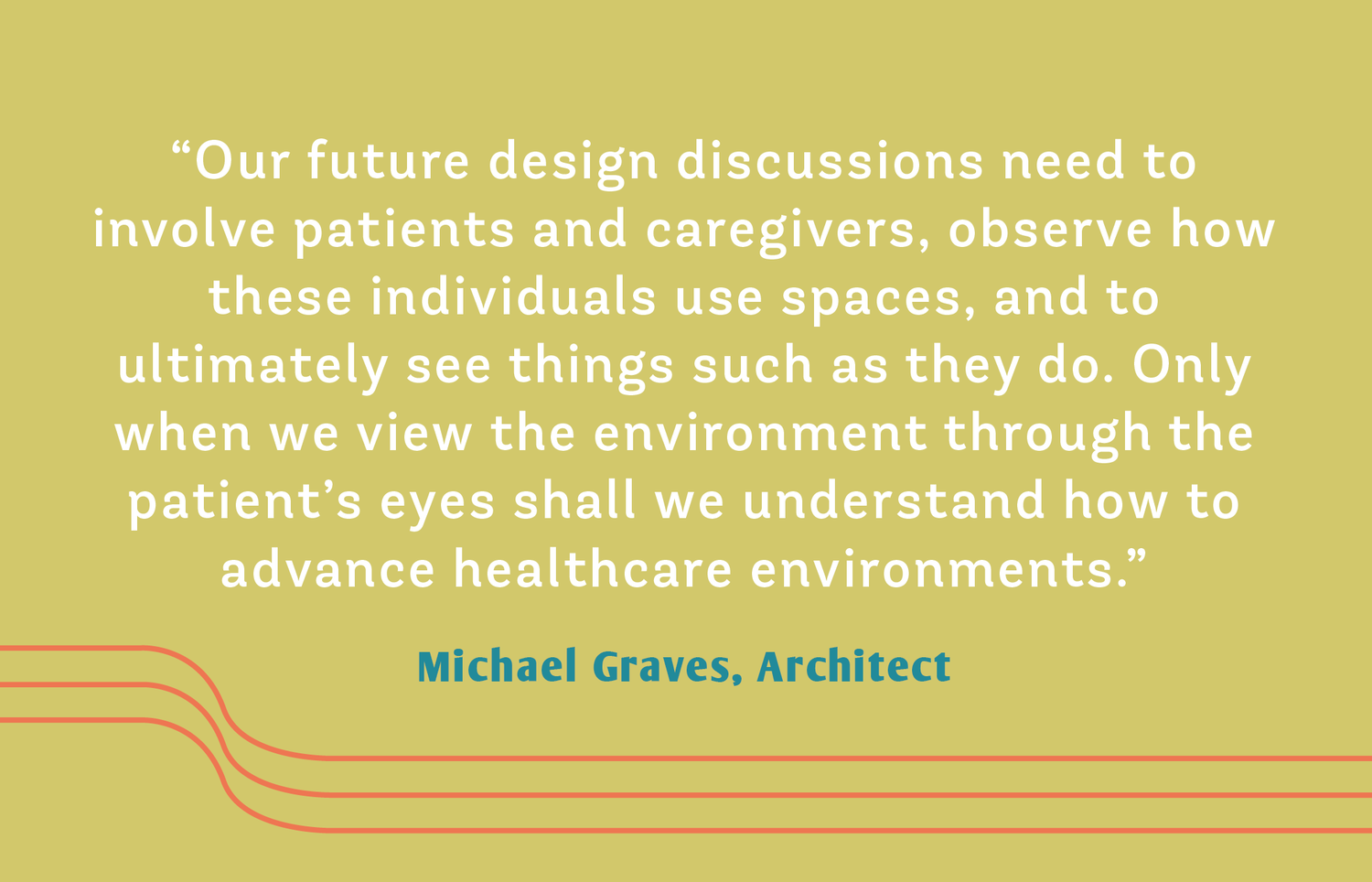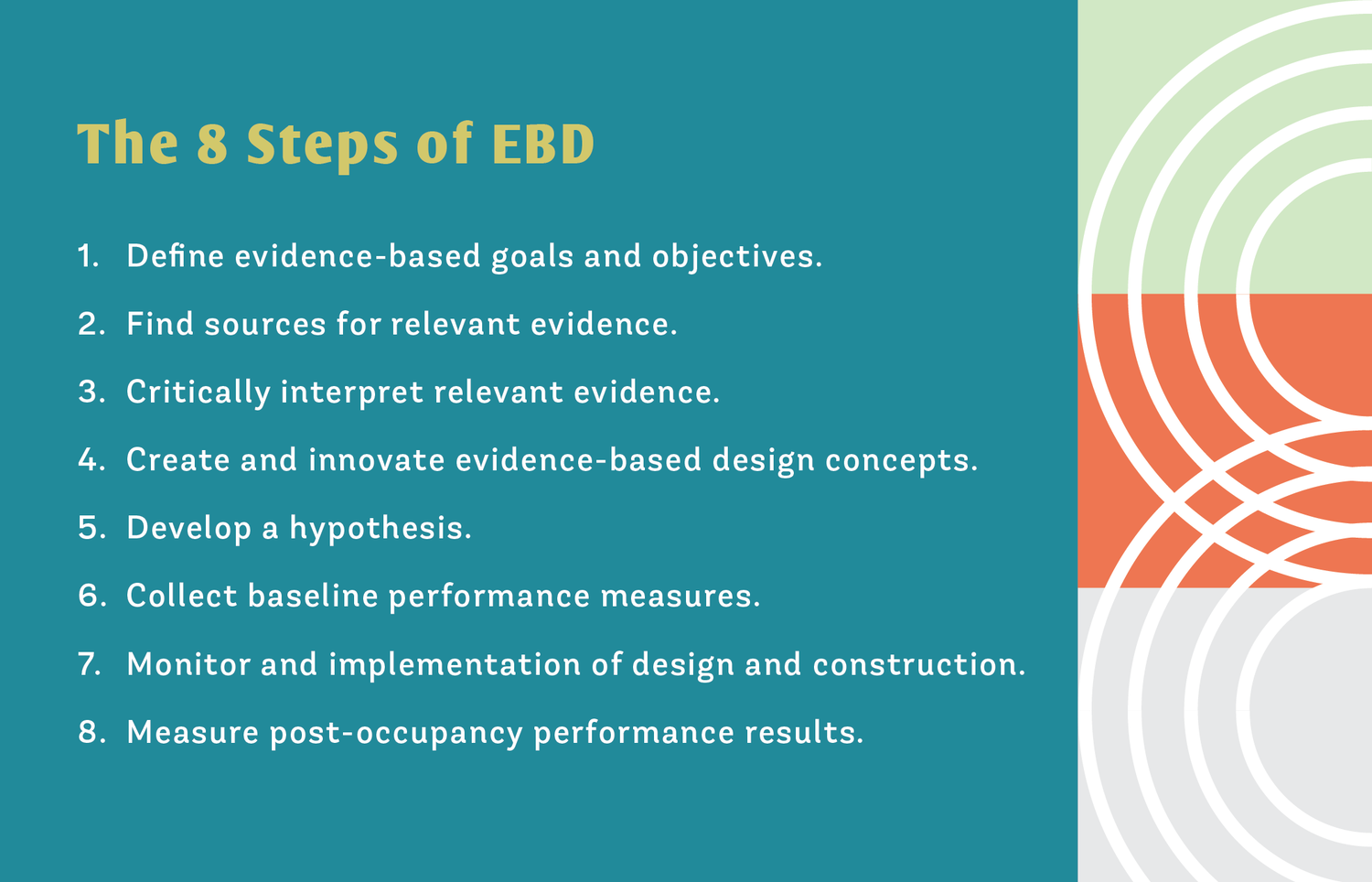Designing the Human Experience: Healthcare Spaces for the People
One of the greatest challenges designers and architects face is planning an environment for a hypothetical user they’ve never met. This problem is further emphasized in healthcare facilities, where additional levels of vulnerability are layered on top of an already existing variety of personal preferences and needs. Healthcare is one of the most complex markets to plan and design; from regulatory requirements and operational needs to complex spatial relationships and human factors.
So, who do we design for? The patients? The staff? The family members?
While satisfying the practical necessities of a medical facility and considering the human experience does elevate the design process to a much more multifaceted problem, the answer is all of the above.
Evidence-Based Design (EBD) should be the starting point in approaching any design problem, especially in healthcare, where an abundance of research and data already exists and new data continually becomes available. Medicare already utilizes EBD as the bases for their Hospital Value-Based Purchasing (VBP) system, which determines hospital compensation based on patient results and becomes an opportunity for hospitals to increase their bottom line through the improvement of the patient experience. While VBP has been in many ways instrumental in raising care quality in hospitals, it does not address the full spectrum of the built environment and its improvement for user benefit.
Approaching any project should invoke three basic considerations in the preliminary design stages: satisfaction of the overall building design and its elements, overall sense of wellbeing experienced in the space and providing a productive environment for care delivery. The baseline for all of these criteria can be established via exterior research and internal surveys, which can provide quantifiable data that can then be utilized for schematic design development. Designing with the “average” patient in mind can result in a space that doesn’t really work for most. The variety of specialties and subspecialties even within a single hospital can require us to address each one with its own unique approach and solution.
The 8 Steps of Evidence Based-Design: 1. Define evidence-based goals and objectives. 2. Find sources for relevant evidence. 3. Critically interpret relevant evidence. 4. Create and innovate evidence-based design concepts. 5. Develop a hypothesis. 6. Collect baseline performance measures. 7. Monitor and implementation of design and construction. 8. Measure post-occupancy performance results.
Physical design of healthcare settings is instrumental in not only creating functioning wholesome healing environments but also vital to caregiver and patient safety, reduction of human errors and hospital-acquired infections. A great example is the transition to single-patient rooms. While this increased overall patient satisfaction and created a more therapeutic environment, it also reduced the risk of infection spread, found to be easier to operate than multi-patient rooms and provided financial savings to the hospitals by avoiding VBP penalties for low performance (Kaiser Health News Report).
An additional example of EBD implementation in the healthcare environment is increased access to daylight and natural light. There is ample evidence showing that patients with exposure to daylight and natural views have shorter recovery times and reduced levels of stress and anxiety. Increasing the amount of daylight in patient’s rooms also reduces the dependence on artificial lighting and minimizing the building’s annual energy consumption.
Designing with the human experience in mind, while relying on EBD, will produce better-designed hospitals that improve patient experience, shorten recovery times, reduce human error, increase safety and reduce overall costs. Smart healthcare design is just part of a sum in the process of improving our healthcare system, but it is a part the other cannot be without.
Sources
Healing environment: A review of the impact of physical environmental factors on users, by E.R.C.M.Huisman , E.Morales, J.van Hoof, H.S.M.Kort (July, 2012).
The Shift to Private Rooms: How Healthcare Reform is Changing Hospital Design, by Becker’s Hospital Review (November 2012).
The Best Medicine for Fixing the Modern Hospital, by Russ Mitchell, Kaiser Health News (November 2012).
How Human Experience Informs Design, Medical Construction & Design (January 2018).
Designing Healthcare Spaces for the Human Experience, by Guest Author, Healthcare Design (February 2015).
The Case for Human-Centered Healthcare Design, by Zachary Loudin, Metropolis (December 2015).
Changing Health Care Design: How informed design drives health care facilities, by Marcy Marro, Metal Architecture (April 2015).










